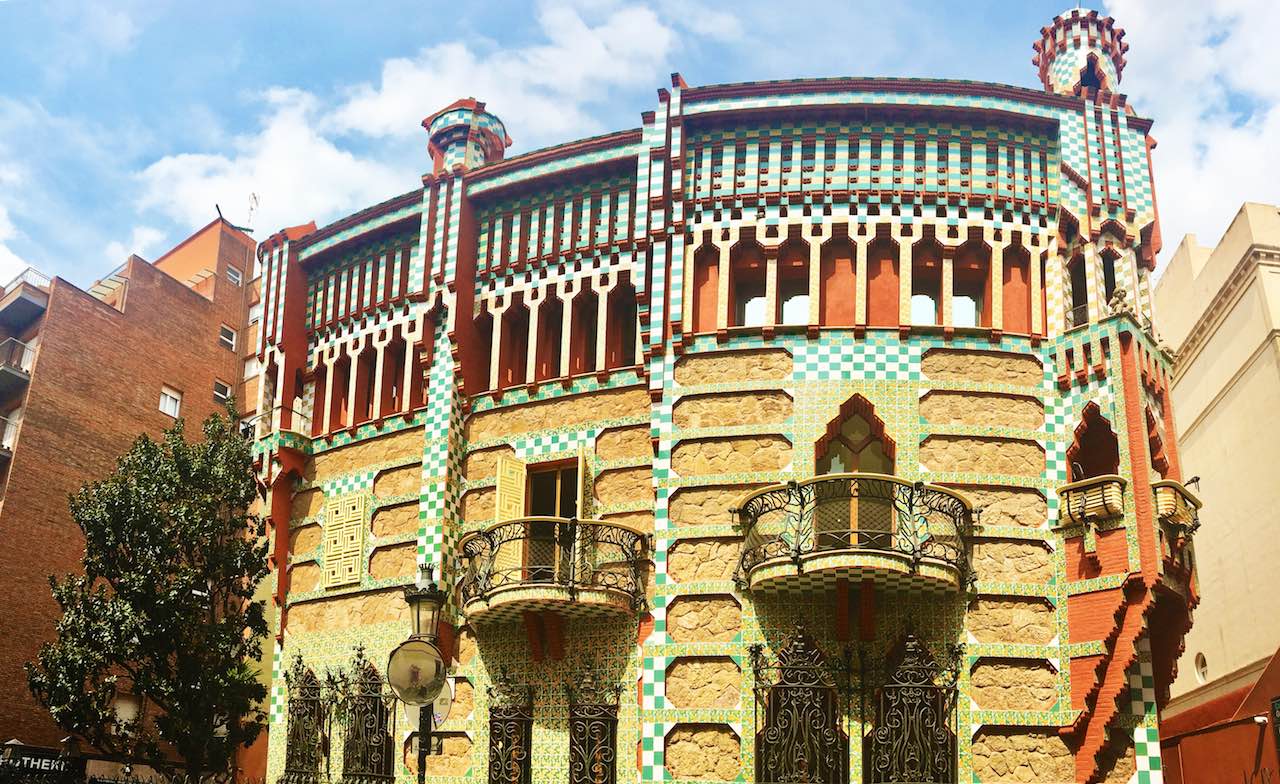With its architectural treasures, world-class foodie scene and 4km stretch of golden sand, Barcelona has long been a favourite for city breaks. Immortalised by the artistic prowess of Gaudi and lauded as one of the best places in Europe for tapas, it’s easy to see why tourists come in their droves to delight in the diverse cultures and flavours of this creative hotspot.
But you don’t have to follow the tourist trail to enjoy a break in the city – discover it through the eyes of a local with this alternative guide.
Alternative Gaudí – Casa Vicens
Think Barcelona, think Gaudí. The world-famous Catalan architect spent most of his life in the city, and his most famous works, including the still-incomplete Sagrada Familia and iconic Casa Batllo, are some of Barcelona’s biggest tourist attractions. One building that has, as of yet, managed to escape the hoards of crowds eager to see the whimsical works of this pioneering architect is Casa Vicens, which opened to the public for the first time in late 2017.
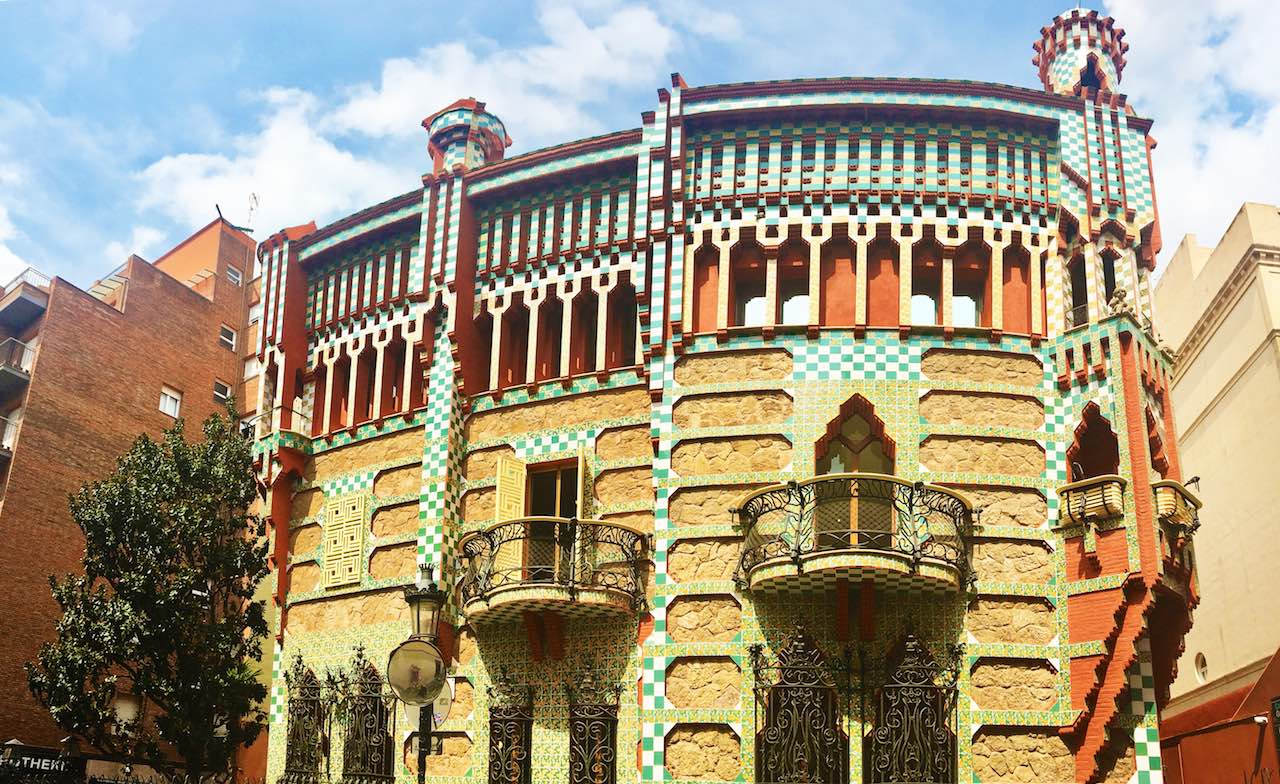
Casa Vicens (c) Laura Pidgley
Designated as a UNESCO World Heritage Site in 2005, this was Gaudí’s first real project in the city, built between 1883 and 1885 as a summer house for the Vicens family. The outlandish design made it one of the first Art Nouveau buildings to be constructed in Europe, and even today it remains like nothing else you have ever seen before, from the ceramic-tiled rooftop turrets to the replica plaster palm trees thick with dates found inside.
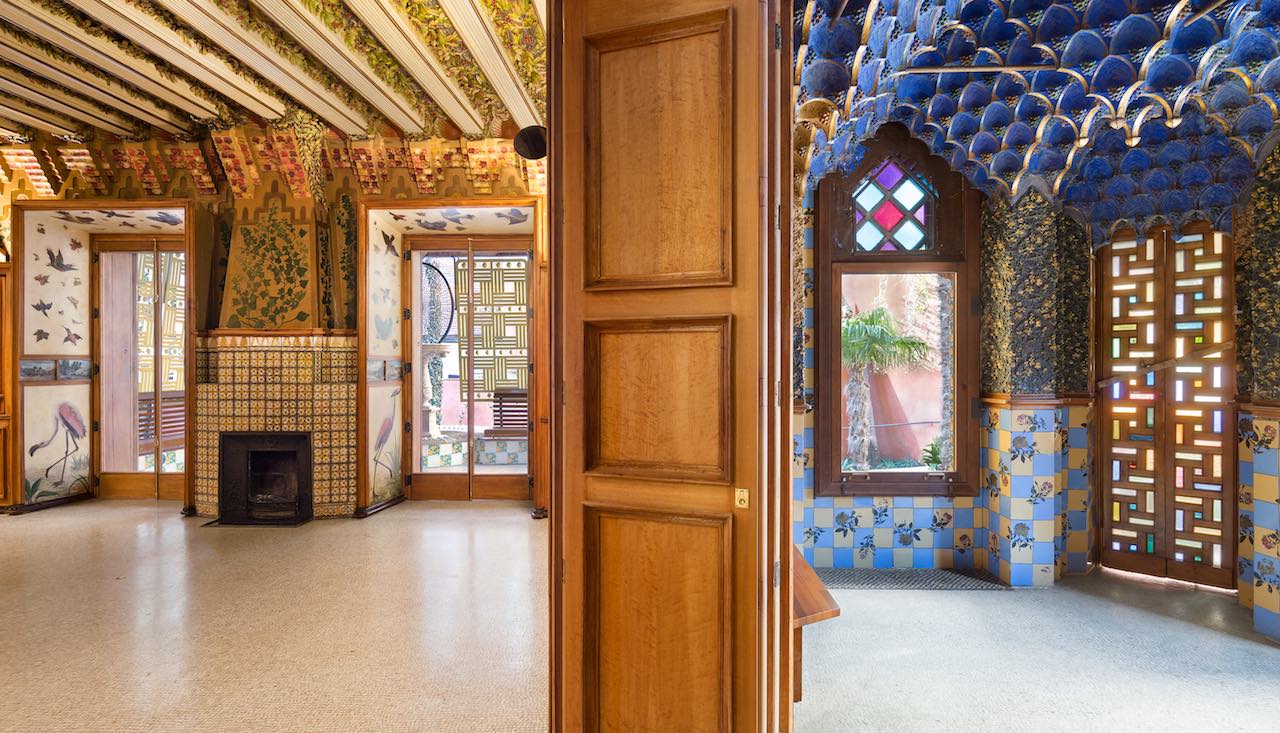
Casa Vicens (c) Pol Viladoms
What sets this house apart from the architect’s other works, though, is the obvious Moorish and oriental influences, which Gaudí combined to create his own very personalised view of Modernism. Whether you’re a traditionalist or not, there’s no denying that this summer house was one of Gaudí’s greatest pieces.
Alternative market – Els Encants
Although every visitor should Barcelona should make time to visit the mesmerising Mercat de la Boqueria, it isn’t the only market in the city. Located in the Glories area in the north of Barcelona is Els Encants, Barcelona’s biggest flea market and a must-visit for anyone with an eye for a bargain.
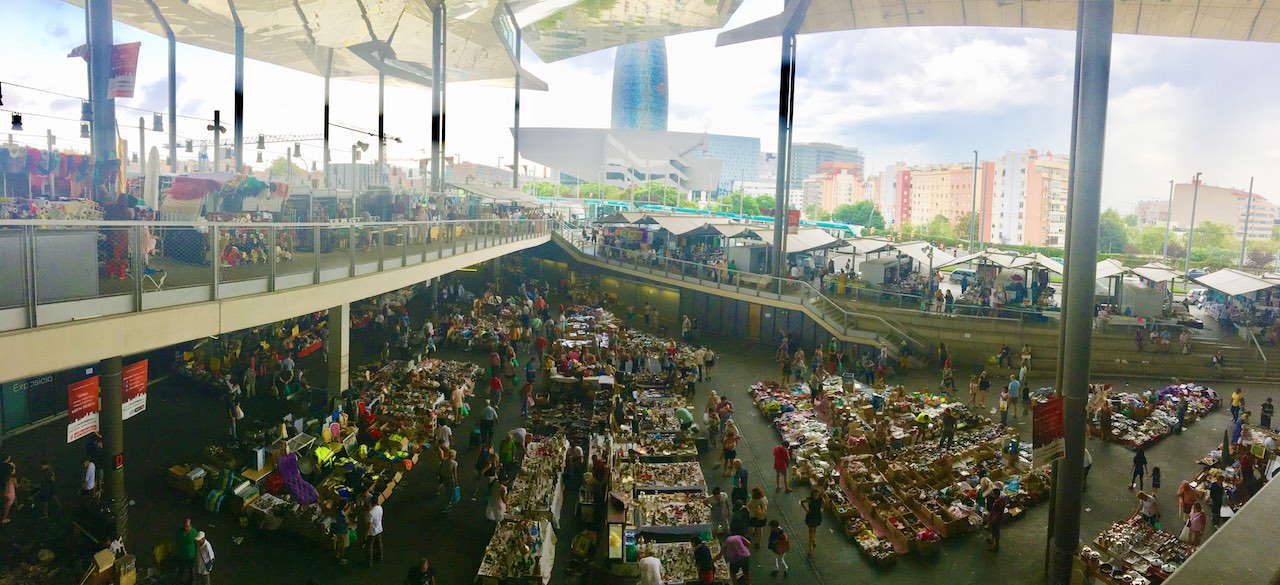
Els Encants (c) Laura Pidgley
Housed in what was once the railway station, this multi-level market is a true architectural showstopper, covering a whopping 15,000 square metres and covered by a futuristic mirrored canopy. On the ground floor you’ll find a labyrinthine maze of sellers displaying their eclectic wares on well-worn rugs – true, you’ll have to sift through quite a bit of junk, but hidden among the discarded children’s toys, old car parts and plastic kitchen utensils you might just find some treasures, like a vintage vinyl or antique ceramics.
The mayhem is a little more orderly on the upper floors, where rows of little shops sell everything from fabric and electricals to handwoven blankets and organic soaps – all at bargain prices. Before you hop back on the metro, be sure to head up to the ‘street food’ area on the top floor – sure, it pales in comparison to the hipster markets of East London, but it’s a pleasant enough place to enjoy a cheap beer and a potato spiral stick while enjoying some live flamenco music.
Alternative eating and drinking – Poble Sec
As with any major city, avoiding the tourist traps and finding genuinely good food can be a tricky game in Barcelona. But the southern suburb of Poble Sec, which was until very recently known only to locals, is earning a reputation for itself as the home of some of the most talked about restaurants in the city.
It’s main thoroughfare, La Carrer de Blai, is lined with fabulous pintxos bars – tapas served on sticks that is more commonly found in northwestern Spain – of which La Tasqueta de Blai is the undoubted favourite among locals.
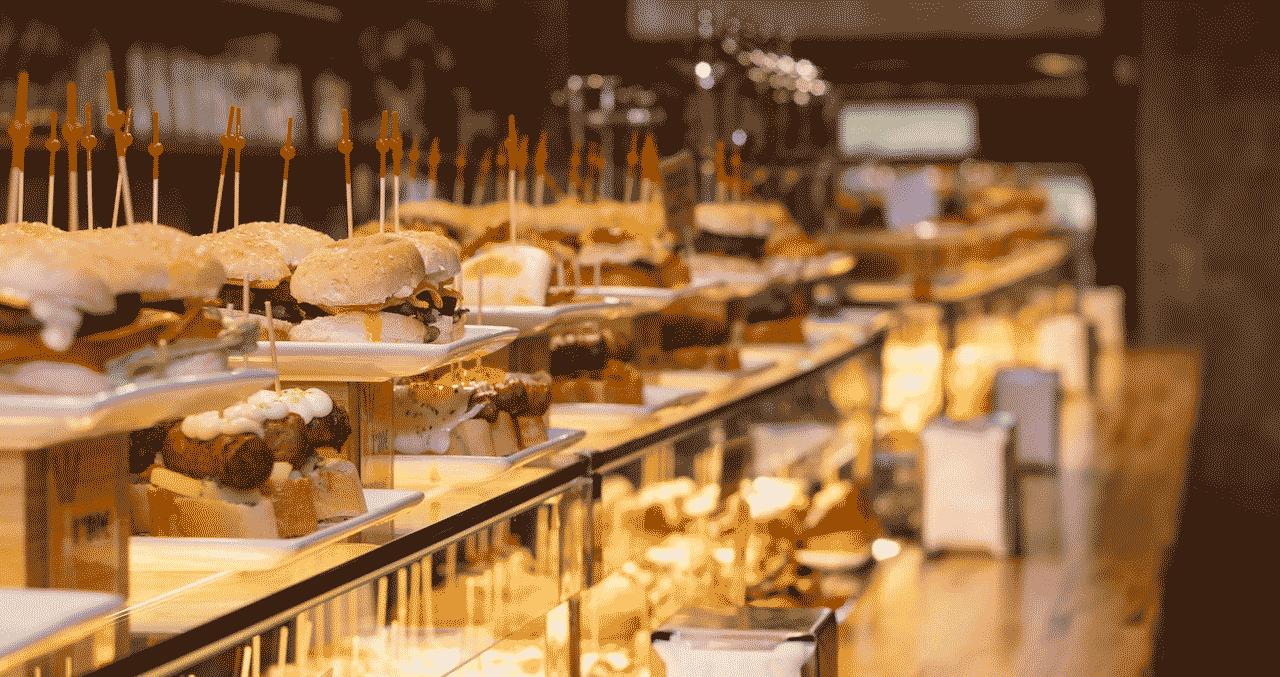
La Tasqueta de Blai (c) Laura Pidgley
Take a stool at the bar and tuck in to quails’ eggs and chorizo, anchovies and tomatoes or salt-cod croquettes, all served in bite-sized portions on individual bruschettas and washed down with some good old-fashioned sangria. After you’ve had your fill, enjoy a few drinks in one of the many grungey bars found in this quarter, of which the wonderfully eccentric Gran Bodega Saltó comes highly recommended.
Alternative neighbourhood – Gràcia
Just one metro stop from the central Passeg de Gràcia, the low-key neighbourhood Gràcia feels a whole world away from the busy streets of downtown Barcelona.
An independent town in its own right until the end of the 1800s, this laidback suburb retains the air of a small-town community and is today a popular haunt for a more bohemian crowd. Wander its historic streets and plazas and you’ll find independent boutiques, eco-friendly thrift shops, forward-thinking art galleries and plenty of pavement cafes, all without the crowds of camera-wielding tourists that often plague other parts of the city.
Alternative viewpoint – Bunkers del Carmel
Many visitors to Barcelona opt to head to Parc de Montjuic for the best vistas in the city, but it is the Bunkers del Carmel, located high above the city on top of the Túro de la Rovira, that are its crowning glory when it comes to views.
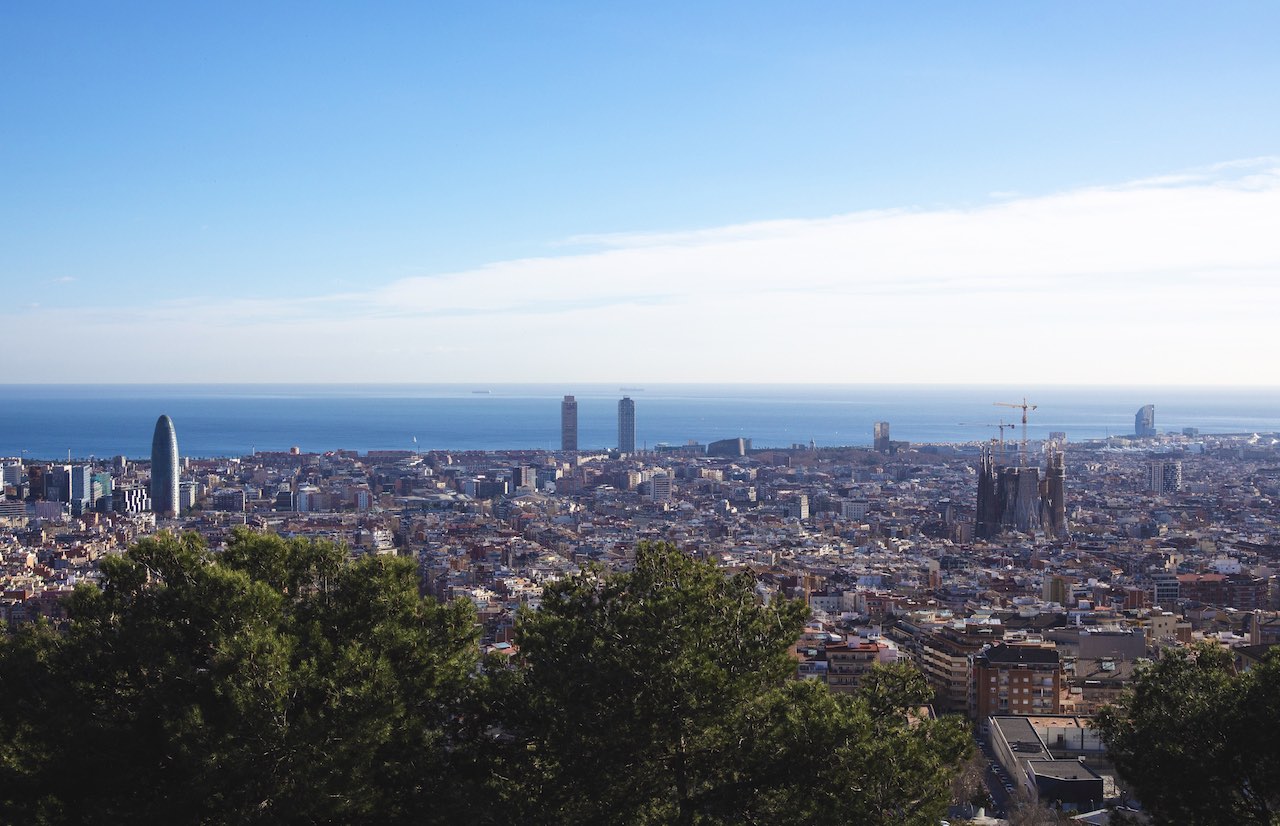
View of Barcelona from the Bunkers del Carmel (c) Laura Pidgley
Built during the Spanish Civil War in 1837, these underground military bunkers acted as a defences against attacks, as well as batteries for storing armour and guns. After the Civil War ended, the bunkers became the focal point of a shantytown known as the Cannons neighbourhood, providing shelter for the city’s poorer residents, until being shut down by the authorities in an attempt to clean up the city before the 1992 Barcelona Olympics.
The area was somewhat forgotten until 2011 when the MUHBA ran a restoration project on the bunkers and breathed new life into the space. Now, it is a popular haunt for locals at sunset, who perch on the bunkers to soak up the sensational panoramas and watch night fall over the whitewashed roofs below.
Source : https://www.thetravelmagazine.net/alternative-places-to-visit-in-barcelona/

